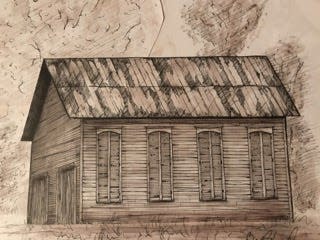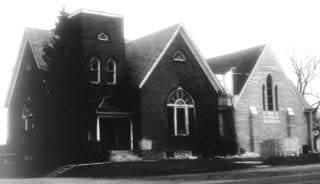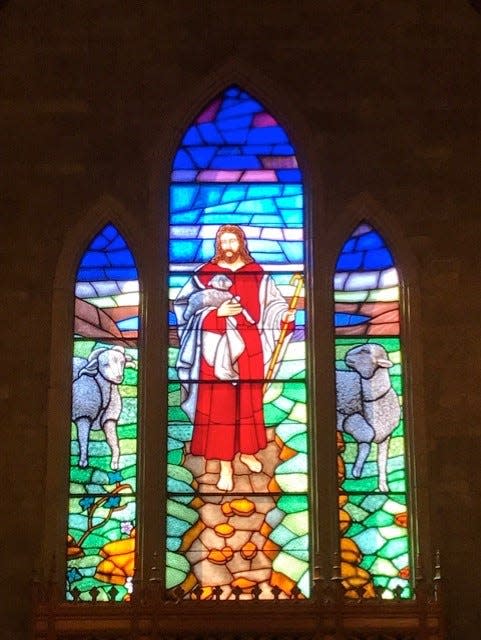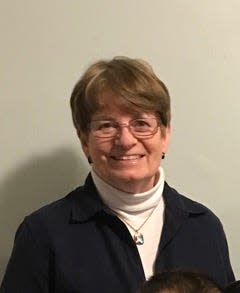Viewpoint: After 175 years, Coalbush Church proud of its past, facing future with faith
It began with a few neighbors meeting in the homes of Christian Weiss and Jacob Beiger on Sundays for “class meetings.” These German farmers probably never dreamed that the Christian seeds they planted in south Penn Township would still be growing 175 years later.
It was in 1848 that those farmers began to meet in their neighbors’ homes along “the road to Bremen” which we now know as Bremen Highway. By 1856, they realized they needed a church building to meet their needs. A one-room wooden building was built on the corner of Bremen and Jackson Roads on a lot donated by Jacob Beiger. It was referred to as “that church in the kohle busch.”

The area farmers were clearing their land for fields by cutting the timber. When Alanson Hurd built a blast furnace on the south side of the river in Mishawaka, the farmers saw a way to get rid of this timber by producing charcoal that Hurd needed for his furnace. They could earn about $80 per 1000 bushels of charcoal. It is believed that the peak of demand for the charcoal was in the years between 1834 and 1856. The farmers in south Penn Township used a conical form pit to slowly burn the timber.
The German neighbors referred to the places where charcoal was made as “kohle busch.” A close translation would be "coal woods." It is supposed that so many pioneer farmers produced charcoal that in time this section of the township became known by that name. The founding fathers of Coalbush evidently decided “Coalbush” would be a good name for the church building.
The first church building was badly destroyed in 1886 by a heavy wind- and hailstorm. The men of the church quickly went to work to rebuild it using much of the same wood but redesigning it slightly. A reed pump organ was used for music and sermons were done in German by circuit riders in this newly constructed church. It was one of the circuit riders, Rev. Levi Newman, who in 1905 led the congregation in the building of a brick building. The old wooden church was moved across Bremen Road to the Weiss farm to be used for farm storage. Church services were held in the Minnick School (also known as the Coalbush School) across the road until the brick church was completed.
The new brick church was built on the same spot where the wooden church had stood. Membership grew, and by 1937, there was a need to have a full-time minister. Rev. Wilson Parks was appointed to Coalbush. This meant a parsonage needed to be built. The Weiss family donated land across from the church on Jackson Road for the church’s first parsonage.
Coalbush began as an evangelical church. In 1946 the Evangelical Society merged with the Brethren Church to become the Evangelical United Brethren. In 1948, Rev. Robert Seitz was assigned to Coalbush. This was an important year as it was decided that the congregation would celebrate its centennial anniversary basing it on the year the farmers had first met in their homes. It was also the time that discussions began on adding onto the brick church or possibly building a new church.
The decision was made to build; however, there was still a shortage of building materials after WWII. The basement was dug, and a tunnel was constructed to connect the old brick church to the new basement. After church services, the children and teachers could use the tunnel to go to the new basement for Sunday School. This tunnel was used for over five years before the upper structure of the new limestone church was built. The two churches stood side by side for a year until the first service was conducted in the new limestone church on July 19, 1959. The brick church was dismantled, and what remained was bulldozed into its own basement. The bell which had hung in its bell tower for over 50 years was placed in the new church’s tower.

In 1968, The Evangelical United Brethren church merged with the Methodist Church to become the United Methodists. Membership at Coalbush was near 400 by this time. Discussions were being made about a new parsonage. In 1978, a ranch home was built east of the old parsonage. The old parsonage was sold and moved down Bremen Highway. In the 1990s, additional land was purchased and a pavilion, memorial garden and playground were constructed. A sesquicentennial celebration in 1998 sparked interest in also adding onto the limestone building. In 2006, this became a reality. The addition included new office space, classrooms and a gymnasium.
The limestone church still stands on that first lot given by Jacob Beiger. With its beautiful Good Shepherd window facing “the road to Bremen,” it has become a landmark to the community throughout the last 65 years. It provided a kindergarten and then a preschool for over sixty years. It was used by the Salvation Army as its headquarters center during the relief efforts after the Palm Sunday tornadoes of 1965. The church also became known for its booth at the St. Joseph County 4-H Fairgrounds where carnival workers, 4-H families and fair visitors have been able to purchase a good meal at decent prices for over 50 years.

Recent years have brought ups and downs for the congregation of Coalbush. A new parsonage was built on land purchased from the great-great granddaughter of founding father, Christian Weiss, on Jackson Road. The COVID pandemic struck, and, as with most other churches, Coalbush began having online services. When the doors once again opened to in-person activities, on-line streaming of the services were continued on Facebook where you are welcome to view our services … or better yet, come in person on Sundays at 10 a.m.!
Always on the same corner, we have been the church in the “kohle busch” for 175 years. We hope generations to come will continue to face the future with faith and cherish its past with pride as we have at Coalbush United Methodist Church.
Nancy Darr is church historian at Coalbush United Methodist Church in Mishawaka.

This article originally appeared on South Bend Tribune: Coalbush United Methodist Church in Mishawaka in year 175.
